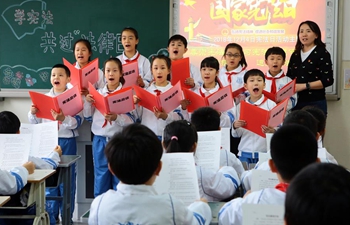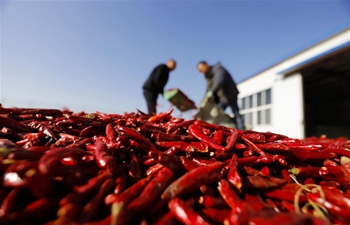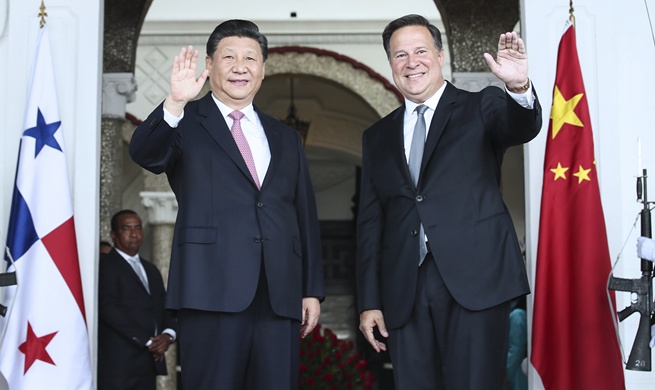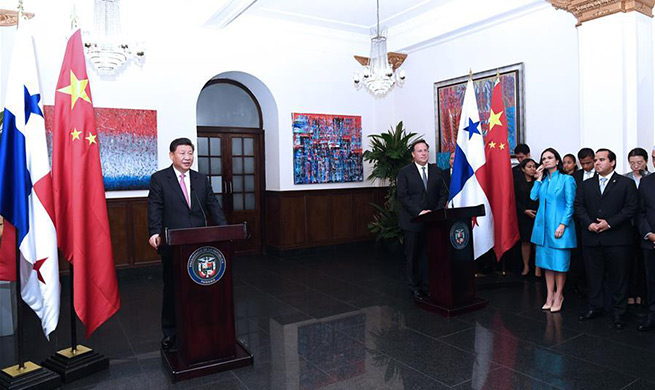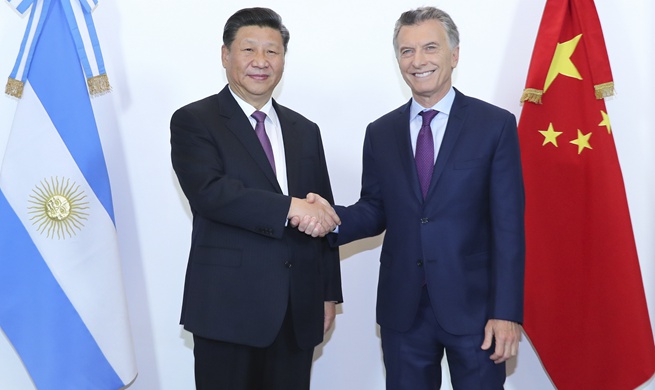HOHHOT, Dec. 4 (Xinhua) -- Zhang Guihua feels warmer at home this winter even with outdoor temperatures falling to minus 20 to 30 degrees Celsius.
Zhang lives in the city of Manzhouli in north China's Inner Mongolia Autonomous Region. Her family, together with other 1,200 households, have benefited from the heating system switch from small coal-fired boilers to clean energy-powered ones.
"In the past winters, we didn't feel warm at home even wearing padded coats," said Zhang. "But it is warmer this year and we sometimes even open the windows a bit to lower the indoor temperature."
Because Inner Mongolia, China's leading coal producer, is also rich in wind and solar energy, local authorities have launched pilot programs to switch from a coal-fired heating system in several regions to using excess electricity generated by local wind farms. Over 20,000 households have benefited from the green drive.
The clean energy generating capacity in Inner Mongolia accounts for about 40 percent of its total power generating capacity, with wind power reaching 26.7 GW at the end of 2017.
In an ambitious move, the region plans to increase its wind power generating capacity to 45 GW in 2020.
Zhao Yunping, the chief economist with Inner Mongolia's Development Research Center, said the region is promoting cleaner and more efficient coal power and also developing wind and solar power in a bid to improve its energy mix.
Due to higher costs, poor grid connections and the grid's preference for more predictable coal-generated power, some installed new energy generating capacity in China is left idle.
To address the issue, local authorities in northwest China's Ningxia Hui Autonomous Region suspended some coal-fired power plants and used more new energy facilities to power central heating systems.
New energy-rich regions like Inner Mongolia and Ningxia are also sending more electricity generated from clean energy to the country's bustling east to help reduce the country's heavy reliance on coal in the fight against pollution and coping with climate change.
China has been delivering on its commitment to the international community on climate change by continuously shifting to a more green economy over the past years.
China is also a leader in new energy vehicles (NEVs), with many regions across the country moving to replace their traditional gasoline-powered buses and taxis with green-energy vehicles.
Authorities in Henan Province announced last week that they would switch buses, taxis, garbage trucks, commuter vehicles, light-duty trucks for logistics delivery and others used in the postal service, tourist sites, ports and airports to clean energy vehicles in the next few years.
The government in the northeastern port city of Dalian announced in mid-November that it would replace all buses and ride-hailing cars in the urban areas with NEVs by 2020 and 2025, respectively.
"When we first announced our electric vehicle production plan, not many people had confidence in us," recalled Wang Chuanfu, chairman of China's electric vehicle giant BYD.
"But we had confidence in our prediction that the traditional vehicle market would have a market size ceiling due to environmental and climate change factors," said Wang.
China has encouraged the use of NEVs to ease pressure on the environment by offering tax exemptions and purchase subsidies. The country has been the world's largest NEV market for three consecutive years, with some 777,000 NEVs sold in 2017 alone. Sales in the first 10 months of this year jumped 75.6 percent year on year to 860,000 units.
Thanks to increased investment in green energy, China's carbon intensity, or the amount of carbon dioxide emissions per unit of GDP, in 2017 had declined by 46 percent from 2005 levels, meeting the target ahead of schedule of a 40-45 percent drop by 2020, according to the Chinese Ministry of Ecology and Environment.
"With these goals met, a very solid foundation has been laid for meeting the target of halting the increase of carbon dioxide emissions by 2030, and even accomplishing that sooner than planned," said Xie Zhenhua, China's special representative for climate change affairs ahead of the Katowice Climate Change Conference in Poland.
China will remain steadfast and active in addressing climate change and implementing the Paris Agreement, Xie said.





